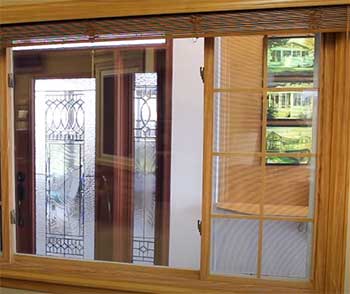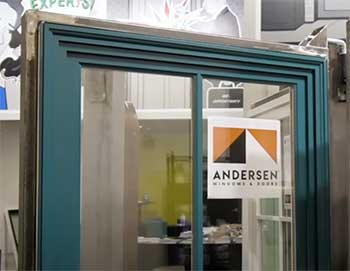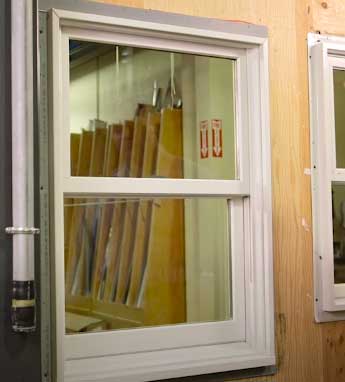When it comes time to replace the windows in your home, you’ll likely be comparing top brands like Comfort windows and Andersen windows. Both companies make high-quality windows, but they have some key differences.
This guide will compare Comfort and Andersen on factors like price, types of windows offered, energy efficiency, warranties, and more. Read on to see which brand is the better choice for your home improvement project.
A Brief Comparison Table
| Factor | Comfort Windows | Andersen Windows |
| Frame Material | Vinyl | Fibrex (composite) |
| Window Styles | Double hung, Slider | Double hung, Casement, Awning, Bay, Bow, more |
| Price | $$ More affordable | $$$ Higher price points |
| Energy Efficiency | Good, ENERGY STAR models | Very good, higher ratings |
| Warranty | 10 years | 10-20 years |
| Availability | Northeast, Midwest, CO | National |
| Contractor Network | Local dealers | Widespread |
Overview of Comfort and Andersen Windows

Founded in 1884, Andersen windows and doors are one of the oldest and most recognizable brands in the industry.
They offer a huge selection of window styles, from double hung and casement to bay and bow windows.
Andersen makes fiberglass and vinyl windows, focusing on energy efficiency and durability.
Their Fibrex composite material blends the strength of wood with the low-maintenance benefits of vinyl.
Comfort Windows was established in 1992 in Pennsylvania. They manufacture vinyl replacement windows that are ENERGY STAR certified.
Comfort’s three window series each have upgraded features, including reinforced frames and sashes, multi-chambered frame extrusions, and steel reinforcement. Comfort Windows has expanded across parts of the Northeast and Midwest over the past few decades.
Major Differences Between The Brands
While both companies make reliable vinyl windows, there are some notable differences:
- Product range – Andersen has a wider array of window types and operating styles while Comfort Windows focuses solely on double hung and slider windows.
- Materials – Andersen offers fiberglass composite windows while Comfort uses only vinyl frames.
- Price – Comfort Windows are the more affordable option overall for homeowners. Their prices are often 20-30% less than comparable Andersen windows.
- Efficiency Ratings – Andersen windows have slightly higher energy efficiency scores, but most Comfort models are still ENERGY STAR certified.
- Warranties – Comfort and Andersen back their window products with similar warranties, providing coverage against defects for 10 years or more.
- Availability – Andersen windows can be purchased nationwide while Comfort Windows are currently limited to parts of the eastern U.S.
In-depth Differences Between Comfort And Andersen Windows
Let’s explore each of these factors in more depth to help you choose the right brand for your home.
- Window Styles Offered
A key difference between Comfort and Andersen is the selection of window types and operating styles offered.
Andersen has an extensive product range that includes:

- Double hung
- Casement
- Awning
- Gliding
- Specialty windows like bay, bow, and garden windows
- Glass doors
- Storm doors
In contrast, Comfort Windows focuses on manufacturing quality vinyl double hung and slider windows.
They offer these styles in different frame colors and upgrading options but lack the broad style selection of Andersen.
If you need replacement double hung or sliding windows, Comfort Windows will have options to fit your needs. For homeowners who want casement, awning, or unique window designs, Andersen will be the better brand choice.
Their wide range gives you more flexibility in selecting products that work with your home’s architecture and style.
- Frame Materials: Vinyl vs Fibrex
Andersen differentiates itself from other brands through their use of a patented Fibrex material for many window frames. Fibrex is a composite that combines the strength and stability of wood with the low-maintenance qualities of vinyl.
The material is highly durable and resistant to warping, rotting, and sagging.
Comfort Windows utilizes only rigid, multi-chambered vinyl frames for their double hung and slider windows. Vinyl requires very little upkeep compared to wood frames. It won’t warp or crack with temperature changes.
Both Fibrex and vinyl are long-lasting materials that provide effective thermal insulation for energy savings. Andersen’s Fibrex offers added structural reinforcement but Comfort’s vinyl frames meet or exceed industry standards for performance.
Vinyl is also more affordable, helping keep Comfort’s prices lower.
Ultimately, performance is comparable between Fibrex composite and rigid vinyl frames. Choose Andersen for the unique material or Comfort to maximize your budget.
- Energy Efficiency and Performance Testing
Energy efficiency is an important factor to consider for any replacement window. You want your new windows to provide excellent insulation while reducing air leaks.
Many Comfort Windows and Andersen windows meet ENERGY STAR standards for energy savings in eligible climate zones. To qualify, they undergo testing to assess:
- U-factor – The rate of heat loss through the window assembly. Lower is better.
- Solar heat gain coefficient (SHGC) – How well the window blocks heat from sunlight. Lower SHGC helps regulate indoor temps.
- Air leakage – Measures air infiltrating through gaps and cracks. Must be 0.3 cfm or less per square foot.
- Condensation resistance – Indicates ability to resist moisture buildup. Higher numbers are better.
Specific efficiency ratings will vary based on the window type and features. But in product comparisons, Andersen windows usually achieve marginally better ratings for U-factor and SHGC. The differences are minor though, and both brands provide energy efficient window options.
Comfort Windows also conducts additional performance tests including structural strength, forced entry resistance, water penetration, and more. Their windows are certified to meet or exceed code standards across North America.
For most homes, the small performance differences between Comfort and Andersen won’t add up to significant savings. Prioritize getting ENERGY STAR certified windows, then weigh other factors like price and warranties.
- Price Differences Between the Brands
One of the biggest factors that sways homeowners toward Comfort Windows is their affordable pricing. On average, Comfort’s vinyl replacement windows cost 20-30% less than comparable Andersen products.
Here are some examples of list prices for basic double hung windows from each brand:
- Comfort W1000 series, 36″ x 60″ double hung = $285
- Andersen 200 Series Narroline double hung, 36” x 60” = $418
Upcharges for custom sizes, high-performance glass, hardware, and other options will add to the window cost for either brand. But with base models and most upgrades, Comfort maintains a clear price advantage over Andersen.

The pricing difference stems primarily from production costs. Fibrex window frames cost more to make than vinyl.
Andersen also spends heavily on research, design, and marketing as a national brand. Those expenses get built into their window prices.
Comfort Windows focuses manufacturing in select regions and sells directly through local dealers.
This helps control overhead and lets them price competitively within the mid-range market.
For shoppers on a tight budget, the lower prices of Comfort Windows give them added value.
But Andersen’s products may justify the higher cost if top-tier performance is your priority.
- Warranties Offered by Each Brand
Replacing windows is a big investment, so you want reassurance that your new windows will hold up. Comfort and Andersen both provide strong warranties on their window products.
Here are some highlights of the warranties offered:
- Comfort Windows: Offers a 10-year warranty covering defects in materials and workmanship that could affect performance. An additional 10-year glass breakage warranty is also included.
- Andersen: Provides a 20-year limited warranty on glass and a 10-year limited warranty for manufacturing defects. An optional 10-year unit replacement plan is also available.
The warranties are similar for vinyl window components, providing a decade or more of coverage against early failure. Glass breakage policies give added peace of mind.
Andersen does offer a longer 20-year glass warranty, but both brands will have you covered in the case of defective insulated glass, laminated glass, or glass breakage within the plan term.
Overall, you can feel confident choosing either brand based on their strong product warranties. Be sure to read all warranty details carefully to know what’s covered. Professional installation also helps ensure your windows function as expected.
- Availability and Contractor Network
Due to its national footprint, Andersen windows are widely available at home improvement stores, window dealers, and contractors across the U.S. There’s a good chance you’ll find local Andersen authorized installers who can order and install their windows for your project.
In contrast, Comfort Windows are currently only sold through a network of dealers in parts of the Northeast, Mid-Atlantic, Midwest, and Colorado. So availability is more limited based on your location. If you live within their sales region, you can connect with Comfort dealers near you.
Andersen’s broad contractor network can make the shopping and installation process convenient. But working with local authorized dealers also has benefits. Comfort’s dealers are experts on the brand who can help find the right window solution for each homeowner’s needs.
If availability in your area is a concern, double check whether dealers for each brand operate near you before deciding. Andersen likely has broader representation, while you’ll need to locate a Comfort Windows dealer within their active sales region.
Key Takeaways When Comparing Brands
To recap the major points when weighing Comfort vs. Andersen windows:
- Comfort offers very affordable vinyl replacement windows but with a limited style selection. Their double hung and sliding windows are an excellent value.
- Andersen provides a huge variety of window types and operating styles. Their patented Fibrex frames add structural reinforcement. Performance is marginally better.
- Both brands offer ENERGY STAR certified options, but Andersen tends to have a slight edge on efficiency ratings.
- Warranties are extensive for both, covering defects and glass breakage for 10+ years.
- Andersen windows are widely available through retailers and contractors. Comfort availability is focused in select Northeastern and Midwestern states.
Frequently Asked Questions (FAQ)
Some brands that offer similar quality and features as Andersen include Pella, Marvin, Milgard, Simonton, Jeld-Wen, and Ply Gem. Each manufactures replacement windows with competitive pricing, energy ratings, warranties, and styles.
It’s hard to say definitively who has the “best” windows deals, as pricing fluctuates and sales are always happening. Among reputable brands, Comfort Windows generally offer some of the most affordable vinyl replacement windows. Empire Today also runs frequent promotions on windows. Look for extended payment plans or interest-free financing to find deals that fit your budget.
It’s a close call between two of the top window brands. Overall, Pella vs Andersen offer similar craftsmanship, energy efficiency, and performance. Key differences:
1. Pella has lower cost fiberglass options, while Andersen’s Fibrex is only for premium windows
2. Andersen has a wider range of operating styles
3. Pella offers slightly better warranties on most products
Both provide excellent protection, ease of use, aesthetics, and custom options
Andersen windows are definitely on the expensive side, but rarely overpriced for what you get. Their use of patented Fibrex material, expansive style selection, advanced glass technologies, and precision engineering gives homeowners added value. Plus, Andersen windows can last decades with proper care, paying off the investment over the long term. For buyers on a budget, more affordable brands like Comfort provide similar performance for less.
Final Thoughts
For many homeowners, the lower cost and solid performance of Comfort Windows makes them a great choice – especially if you just need standard double hung or slider windows.
Andersen is ideal if you want maximum selection, cutting-edge materials like Fibrex, and best-in-class efficiency.
Weigh the factors that matter most to your replacement window project before deciding between these two worthy brands.

